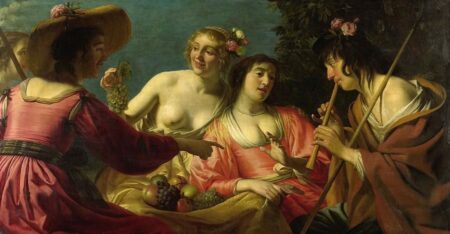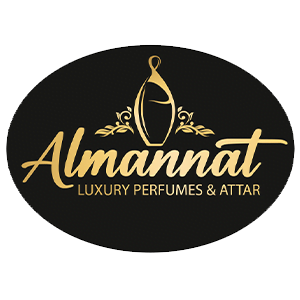Annick Goutal Eau du Sud Review 1996


Annick Goutal Eau du Sud Ida’s 1996 Bottle
Nymphs and shepherds, come away.
In the groves let’s sport and play,
For this is Flora’s holiday,
Sacred to ease and happy love,
To dancing, to music and to poetry. ~ Thomas Shadwell, English Poet Laureate and dramatist

theatrical poster of The Libertine (2005) with Johnny Depp
Whenever I don the late Annick Goutal’s Eau du Sud, created in collaboration with Isabelle Doyen in 1996, it conjures an aromatic accompaniment to the Baroque period (~1600-1750): the cavorting of nymphs and shepherds, the strains of Henry Purcell (aria from The Libertine, or the Force of Love), the paintings of that period which are laden with fleshy eroticism and classical mythological figures. All of this, mind – in a Mediterranean climate. Eau du Sud is a languorous landscape which places us firmly in the south of France during the pinnacle of estival swelter: deceptively tonic and blithe-appearing at first sniff, its earthy underbelly suggests a more inherent carnal aspect amidst an abundance of herbs and citrus.

Gerard van Honthorst Flute playing Shepherd and Four Nymphs, 1632, Rijksmuseum
While overt olfactory references are often marvelous to behold, there is something inexplicably alluring about sensuality masquerading as innocence. It’s as if one peels away layers of pristine lace and linen, only to uncover scant and slinky charmeuse lurking beneath a more prim façade. Annick Goutal Eau du Sud is one such example of fragrant duplicity: it is absolutely natural-smelling, the perfect image of maquis and Mediterranean, a scent so universal that everyone may delight in it – and they do. All of my family enjoy it, even the more fastidious and hard-to-please members. How many of them pick up on the more fleshly characteristic is up for discussion; several of them vigorously eschew animalic fragrances, yet they are drawn to this one.
The formula for Annick Goutal Eau Du Sud appears relatively uncomplicated at first glance, and it’s a genre which has long enjoyed widespread appeal: the aromatic chypre. What links this group is a base which is most often loaded with oakmoss, patchouli, vetiver (and may include musks, leather notes, and cedar or sandalwood). A few of the beauties which have preceded it encompass Monsieur Balmain, Le Galion Whip, Dior Eau Sauvage, and Yuri Gutsatz’s 1978 Verveine d’ Été. Chris Maurice’s Fiero for Xerjoff Casamorati followed fourteen years later; Frederico Parfums Lemon Basil Fizz, 27 years afterwards. This inspiring category is loved precisely for its versatility and ease of wear.

olive tree via pixabay
There exist so many commonalities amongst these aromatic selections that one might, quite reasonably – wonder whether all these variations on a single theme are necessary (or desirable). I suggest that there are several factors to consider: a) scent pyramids/note lists don’t reveal all the materials employed; b) proportions are key, and these are rarely discussed – so that each fragrance may share components, but it is the proportions which make a difference; c) quality grade of olfactory ingredients may vary greatly, depending on their terroir and/or source. There are modifications in other scents which include a plethora of herbs (thyme, tarragon, rosemary, caraway, artemisia) and floral adjuvants (these frequently are rose, neroli, violet, orris, carnation, and lavender), citrus and spice (lemongrass, coriander, nutmeg, cumin). It’s a matter of degree, increment, and personal preference.
What distinguishes Annick Goutal Eau du Sud is not its simplicity, but its veracity. Its sun-soaked environment celebrates le Midi and the profound sense of détente one experiences during high summer – when the climate dictates our level of activity, when we long to sit under the shade of a venerable olive tree, sipping pastis at our leisure. Unlike any number of aromatic chypres, Eau du Sud does not include lavender; it engages an indolic jasmine and a substantial dose of oakmoss. IFRA regulation of oakmoss did not begin until ~ 2001 – so the original eau de toilette which I describe was saturated with the moody, inky loveliness available at the time (1996). Cumin is not listed, but the nose has the impression that it, or a similarly pungent spice – contributes to an underscored animalic presence which is subtly unsettling. It catches us unawares, reminding us that not all things are as they seem.
Underneath Eau du Sud’s sunny good humor lies a sottovoce earthy growl. It is the stuff of sensuous dreams and legend. Our dreams are our own to claim, a realm in which the wholesome and the lascivious may co-exist at their pleasure.
Notes: basil, bergamot, grapefruit, mandarin orange, Persian lime, lemon verbena, mint, jasmine, oakmoss, vetiver, patchouli
Annick Goutal Eau Du Sud1996 from my own collection. My nose is my own…
~ Ida Meister, Deputy and Natural Perfumery Editor
Follow us on Instagram @cafleurebonofficial @idameister @goutalparis
This is our Privacy Policy.
